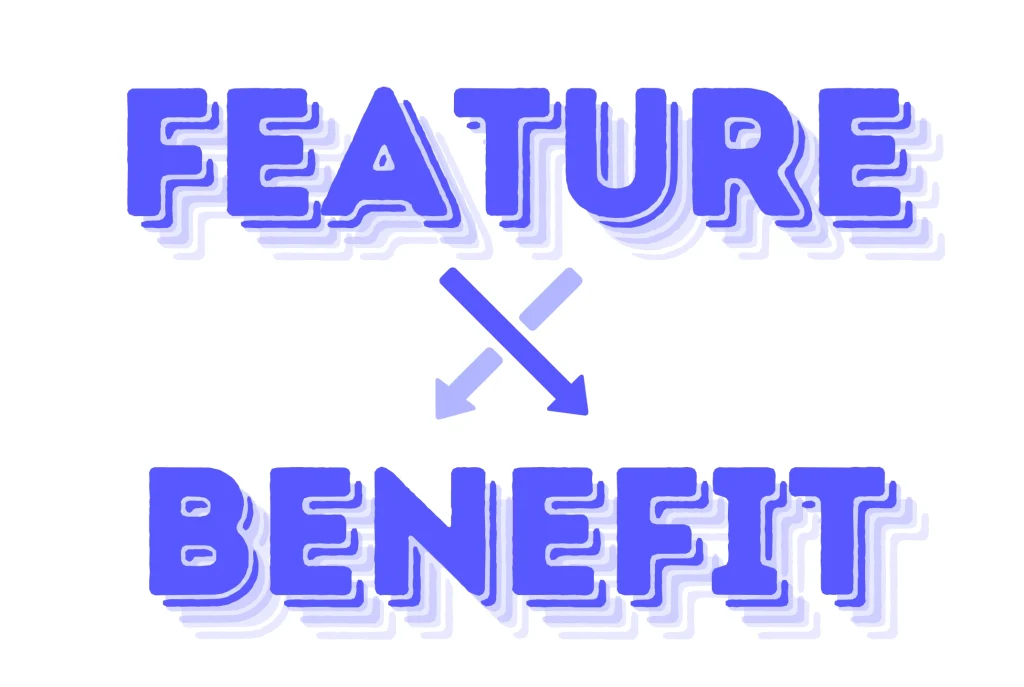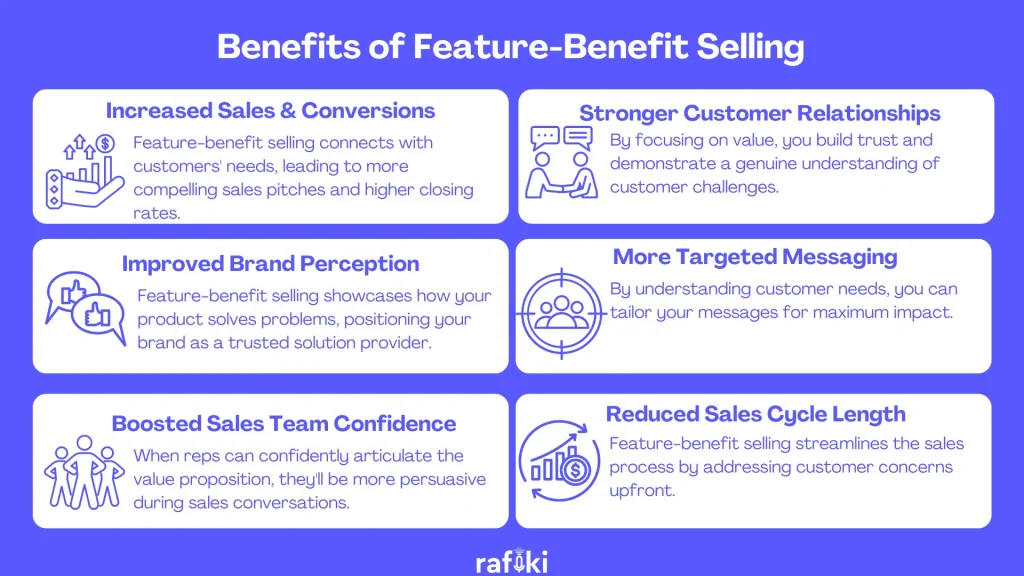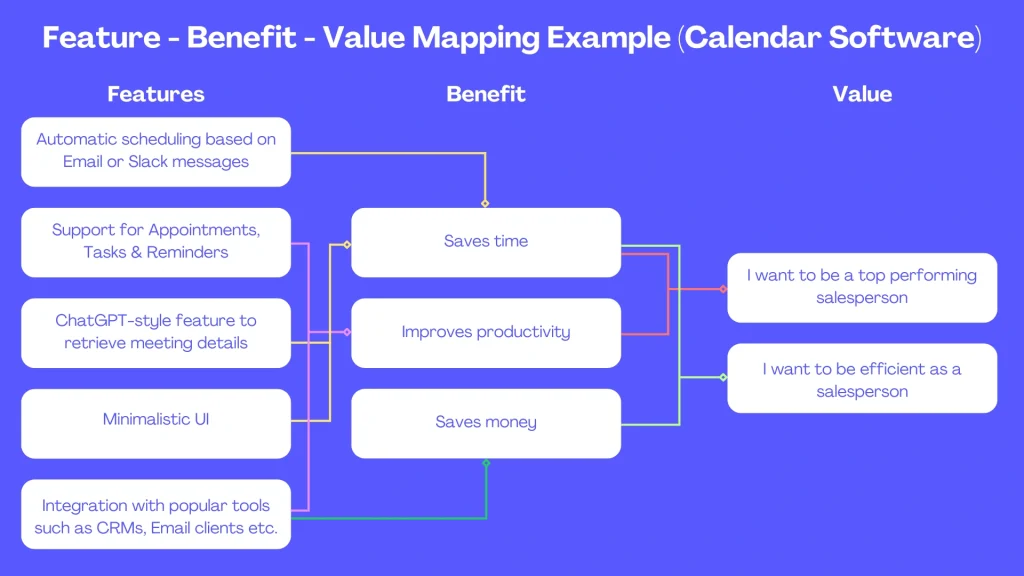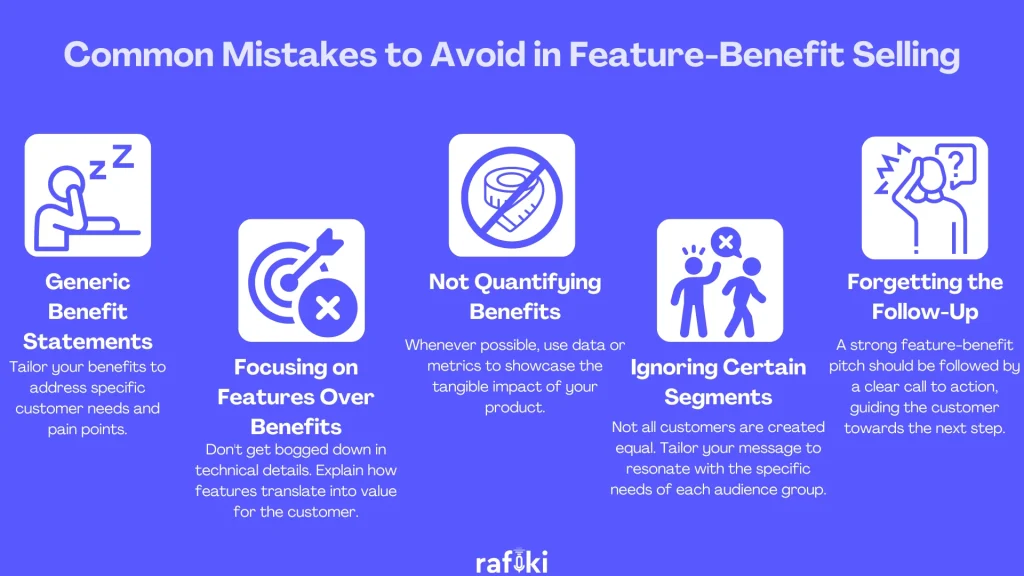Why Rafiki
Pricing


Pricing
Solutions

RevOps Leaders
Synchronize revenue generating functions

SDR Leaders
Get your team aligned and Coach your Reps 3x faster at scale

Sales Leaders
Unlock pipeline truth, drive confident forecasts

Ever feel like your sales pitches fall flat? Feature-benefit selling can change that. It's a customer-centric approach that transforms product features into tangible benefits, boosting conversions and building trust. By focusing on how your offerings solve real problems, you'll speak directly to your customers' needs and watch those "maybes" turn into "yeses."
Let’s dive in!
Have you ever walked into a car dealership and been bombarded with technical jargon about horsepower, fuel efficiency, and torque? While these are all features of a car, they might not resonate with someone simply looking for a reliable vehicle for their daily commute. That's the key difference between features and benefits. Features are the characteristics of a product or service, the nuts and bolts. Benefits, on the other hand, explain how those features translate into a positive impact on the customer's life.
Feature-benefit selling bridges this gap between functionalities and value. It's about taking those features and transforming them into compelling reasons why a customer should choose your product. Instead of just saying your car has a high horsepower rating, you might highlight how that translates to a smooth ride on the highway, perfect for those long weekend trips.
Think of it this way: features are all about the "what," while benefits focus on the "so what." Customers aren't buying features; they're buying the positive outcomes those features deliver. Feature-benefit selling allows you to connect the dots and demonstrate the true value proposition of your offering. By speaking to your customer's needs and aspirations, you can craft a message that resonates and compels them to take action.
Now, let’s summarize why you should spend all the time & effort required to implement feature-benefit selling:

So, you're convinced feature-benefit selling is the key to unlocking more sales conversations and closing deals. But how do you actually put it into practice? Here's a roadmap to get you started:
This might seem like a no-brainer, but a deep understanding of your product's features is crucial. Take some time to make a list of everything your product or service can do. Don't just stop at the technical specifications; consider the broader functionalities and how they might benefit different customer segments.
Now it's time to shift your focus to the customer. What are their biggest challenges? What keeps them up at night? Conduct market research, analyze customer feedback, and even engage in one-on-one conversations to understand their pain points and goals.
Here's where the magic happens! Match each feature on your list to the specific benefits it offers that address your customer's needs. For example, if your product boasts a "user-friendly interface" (feature), the benefit might be "increased efficiency and reduced training time for your team" (benefit).
In fact, this is a highly beneficial exercise that should be done by every sales person from time to time, regardless of whether you’re implementing feature benefit selling or not. To map the three pillars of your proposition i.e. features, benefits and value. Value is often a misunderstood term, but here you can think of it as a higher level benefit, something that speaks to the core of who the prospect is or what they want.
Here is an example of feature-benefit-value mapping for a calendar software:

Don't just say your product is "fast" or "reliable." Craft benefit statements that paint a vivid picture of the positive impact it will have on the customer's life. Use strong action verbs and quantify the benefits whenever possible. For instance, instead of saying your software is "easy to use," you could say, "Rafiki's intuitive interface can help your sales reps get up to speed 50% faster, allowing them to close more deals sooner."
The more comfortable you are articulating the benefits of your product, the more convincing you'll be to potential customers. Rehearse your pitch out loud, role-play with colleagues, and even record yourself to identify areas for improvement.
Mastering feature-benefit selling is more than just a fancy sales technique; it's a strategic approach that transforms product descriptions into compelling reasons to buy. While the core principles remain the same, here are 10 specific tips to elevate your feature-benefit selling and close more deals:
Features are technical, but benefits tap into emotions. Highlight how your product will make customers feel – secure, empowered, or in control. For instance, selling a home security system isn't just about the number of sensors (feature). It's about giving homeowners peace of mind and a sense of security for their families (benefit).
Facts tell, but stories sell. Weave anecdotes into your pitch that showcase real-world examples of how your product has benefited similar customers. Sharing a story about a client who increased sales by 20% after using your CRM platform (benefit) is far more impactful than simply listing its features.
Don't just explain what your product does; explain why it matters. When presenting a feature like "24/7 customer support," go beyond its face value. Explain why it's important (benefit) – perhaps to ensure customer satisfaction and minimize frustration, giving them peace of mind knowing help is always available.
Avoid technical jargon and industry buzzwords. Use language your target audience understands and tailor your message to resonate with their specific needs. For example, if you're selling accounting software to small businesses, focus on benefits like "saving time on bookkeeping" rather than boasting about complex accounting algorithms (features).
Numbers add credibility. Whenever possible, quantify the benefits of your product with data or metrics. For instance, instead of saying your marketing software "improves campaign performance," highlight how it "increased click-through rates by 30%" (benefit).
The more specific you are about the customer's challenges, the more impactful your solution will seem. Conduct thorough customer research to understand their unique pain points and tailor your benefit statements to address them directly.
Be prepared for potential objections customers might raise. Think through these concerns beforehand and craft benefit statements that preemptively address them. If a customer hesitates about the cost of your product (a potential objection), highlight the long-term benefits (increased efficiency, cost savings) that outweigh the initial investment.
Encourage questions during your sales pitch. This demonstrates your confidence in the product's value and allows you to tailor your benefit statements to the customer's specific needs in real-time.
Testimonials, case studies, and customer success stories are powerful tools for social proof. Showcase how others have benefited from your product, adding credibility to your claims and demonstrating the value proposition in action.
The more comfortable you are articulating the benefits of your product, the more convincing you'll be. Rehearse your pitch out loud, role-play with colleagues, and use tools like Rafiki to analyze your sales calls and identify areas for improvement. By honing your delivery and tailoring your benefits to resonate with each customer, you'll be well on your way to closing more deals.
No best practices guide is complete without discussing the pitfalls to avoid during the implementation. Here’s what you need to avoid:

Let's see how feature-benefit selling translates into action across different customer segments:
Mastering feature-benefit selling is a game-changer for any sales team. By focusing on the "so what" instead of just the "what," you can craft compelling messages that resonate with your customers and drive sales. Keep in mind, it's all about understanding their needs and demonstrating how your product or service can help them achieve their goals.
Ready to put feature-benefit selling into action and see the results for yourself? Sign up for your free 14-day trial of Rafiki and discover how our conversation intelligence platform can empower your reps to deliver winning sales pitches, every time.
Master Feature-Benefit Selling